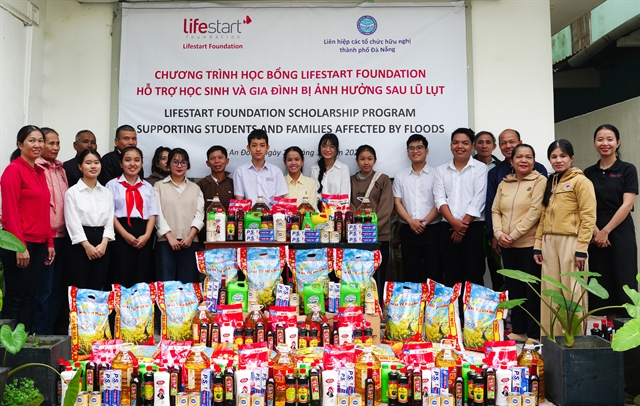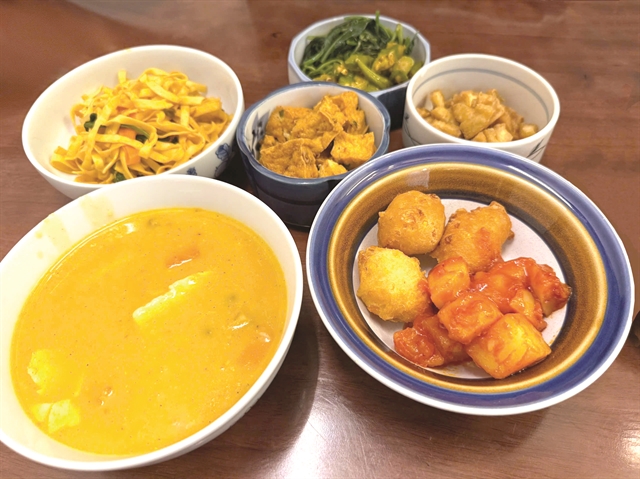 Life & Style
Life & Style

Mr. Bùi Ngọc Thái puts on his plastic gloves and carefully mixes the thin layers of lean pork meat, lard and skin with some salt, MSG and thính, the golden roast rice grounded into a brownish powder. The pleasant fragrance of thính started to fill the room.
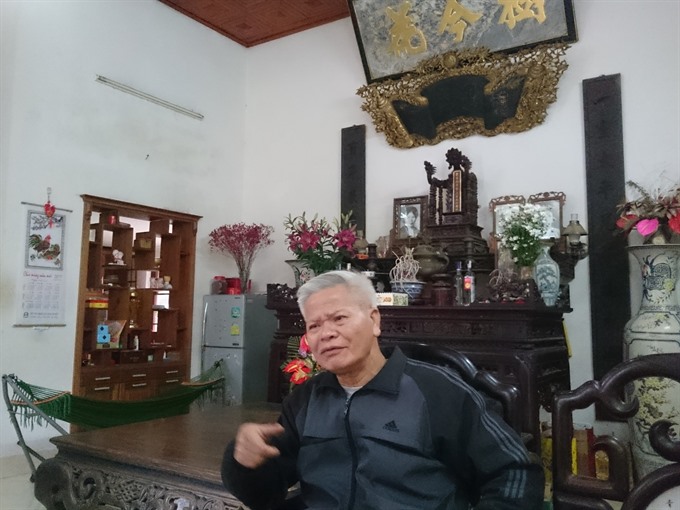 |
| Century of memories: Mr. Thái recalls the ups and downs of the nem and of his family and his country at large. |
By Nguyễn Mỹ Hà
Mr. Bùi Ngọc Thái puts on his plastic gloves and carefully mixes the thin layers of lean pork meat, lard and skin with some salt, MSG and thính, the golden roast rice grounded into a brownish powder. The pleasant fragrance of thính started to fill the room.
His family’s workshop in Đan Phượng district, 20km west of Hà Nội, is less than 100 square meters. But it produces a special delicacy—nem Phùng—that regularly travels by air, train and bus to anywhere on earth where Vietnamese people are living.
In his high-ceilinged country home across the street from the workshop, Mr. Thái recalled how his grandfather used to make his nem at a cart stop eatery serving travelers and commuters who stopped by.
“My grandfather was born in 1890, the same year as President Hồ Chí Minh,” he said. “He sold giò (steamed pork jambon) and chả (fried pork cakes) and nem in his eatery and became very successful.”
Thanks to his grandfather’s martial arts skill, neither gangs nor robbers could steal from him. Known around the area by the name Phó Hội, because he bought a small position in the local administration—something like a village sheriff – was very successful in his days. “Over time, he built his fortune by selling food and slowly purchased rice-cultivating land around the area. At one point he accumulated up to 50 acres of land, equal to 18 ha of land today.”
Vast political forces would soon alter the culinary family’s course. The Việt Minh League led by President Hồ Chí Minh declared to the world that Việt Nam was an independent country on September 2nd, 1945.
 |
| Family photo: "My grandfather planted this tree in front of his foodshop. Children, let’s take a photo with greatgrandpa!" |
The fragile independent status did not last long, as the French returned to wage war with Hồ Chí Minh’s government in winter 1946, pushing the young independence fighters into hiding in the mountains and jungles. In 1947, grandfather Phó Hội was killed by artillery fire and his wife wounded.
His wife kept the family alive by maintaining the food stall, where she continued to make the nem Phùng, named after the large region known as Phùng in
The dish has become a delicacy in several provinces in the north of Việt
Served as a snack, not as a staple food to be consumed with rice, nem Phùng are often made into small golf ball-sized rounds and sold for mostly men to take with rice liquor. It’s a delicacy for a taste or a snack, not a meal to fill up on.
After 1954, when Hà Nội was liberated from French rule, Mr Thái’s father, who had left home to join the revolutionary forces up in the mountains, returned home to tend the rice fields his father had left.
But the joy of reunion did not last long.
In 1956, the land reform swept through the northern countryside. The fields that were once the pride and wealth of the family under the grandfather became their shame.
“My father was branded a landlord and tied up with his elbows behind his back and he was sentenced to 12 years in jail,” Mr Thái said. “I was nine years old and I saw it.”
But he did not serve a full sentence. “My father spent only six months in jail, and then a correctional team came to our village to reopen the cases. My father wrote a report saying he had worked with many people while in the army. The team confirmed what my father wrote and he was later released.”
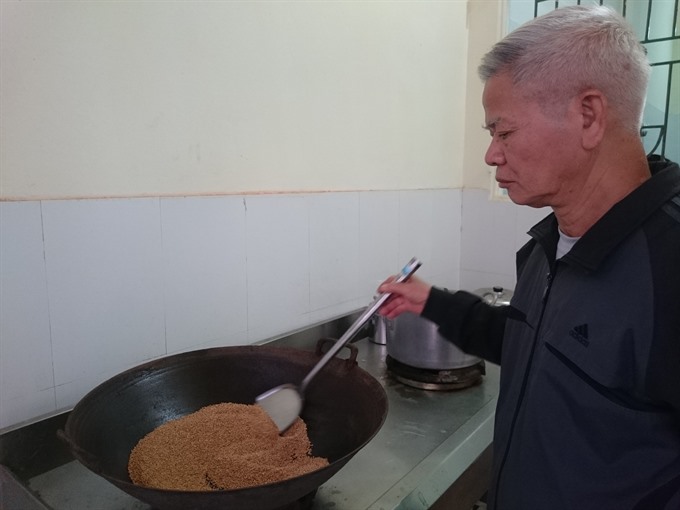 |
| In the pan: Mr. Thái slow roasts rice for making golden rice powder. |
Mr Thái said he learned to make nem Phùng from his father, who took charge of all the family’s farming work.
Ten years later in 1966, Mr Thái himself joined the army.
“In 1968, I was wounded in the battle of Quảng Trị,” Mr Thái said. “I had an operation, the shrapnel was taken out. Luckily it only took away some of my intestine and I was assessed as a war invalid, level 4/1.”
In 1983, one of the country’s hardest economic times before đổi mới or renovation began in 1986, Mr Thái decided to become a civilian at age 34.
“I demobbed with a degree of permanent disability, receiving 66 per cent of my full salary, which was VNĐ36,000 in 1983.”
His third son, the youngest and the only one who now follows the family’s tradition, was born the same year.
Mr Thái recalled how he decided to revive the family’s delicacy that year. “The first batch, I made 30 balls of nem and brought them to several neighbouring food stalls. I sold them for VNĐ1,000 each.”
Now he’s making in a day almost what he used to make in a month.
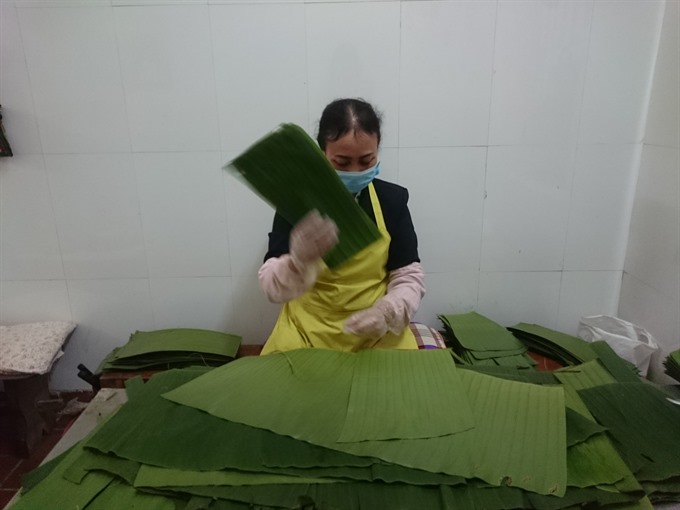 |
| No preservatives: Banana leaves keep the food moist up to two days only. |
Keeping family’s name
Today, Mr Thái’s nem has registered under a commercial name, Nem Phùng Thái Cam. Thái is his name and
“My family’s nem used to be known as Phó Hội, for my grandfather, and later as Trùm Học, for my father,” Mr Thai said. “But my predecessors have long passed away and I would not want people to call their names everyday!”
Vietnamese custom calls for using the ancestors’ names only with great respect, during death ceremonies or in the family handbook.
“In the past, the label and patent were not as important,” Bùi Ngọc Hà, the son, adds. “Our ancestors’ fame only existed in the memories of people in the area.
In 2014, Mr. Thái was named a Master of Folk Craft. Though the custom of making nem has survived for four generations, the recipe is not easy for outsiders to replicate.
“It’s not something we can write down in a precise recipe,” Mr Hà said. “You need to do it many, many times and get a feel for the dish and try always to make it better. Some of my family’s employees were able to open their own shops. All the families making nem Phùng in this region are related.”
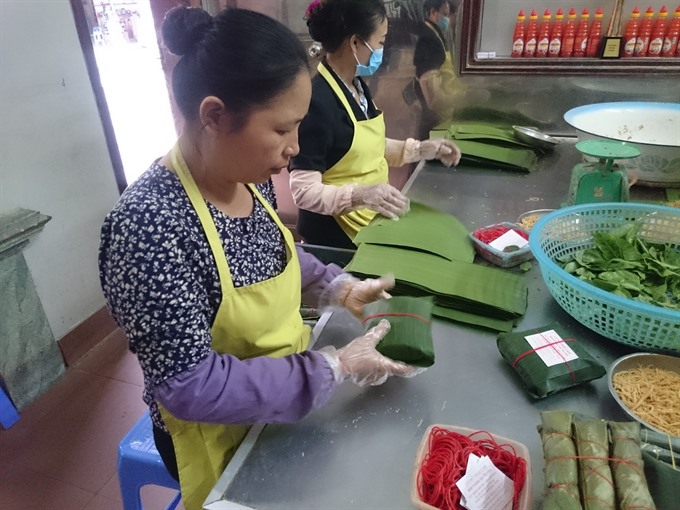 |
| Tubular: Women wrap up the nem in banana leaves. The shop no longer make golf ball-sized nems. — VNS Photos Mỹ Hà |
Nem Phùng are made everyday and must be eaten within two days. “It’s the only drawback of our nem,” Mr. Thái said.
“We tried to put it in airtight bags, but it lost is fluffiness,” his son added.
Mr. Hà said the Hà Nội Food Safety office conducts hygiene checks twice a year and the local office also checks them out twice a year.
“I have heard from customers who brought our nem to many countries around the world,” Mr. Thái said. “We only sell at home here, and send a few dozen packs to the famous Quốc Hương shop in
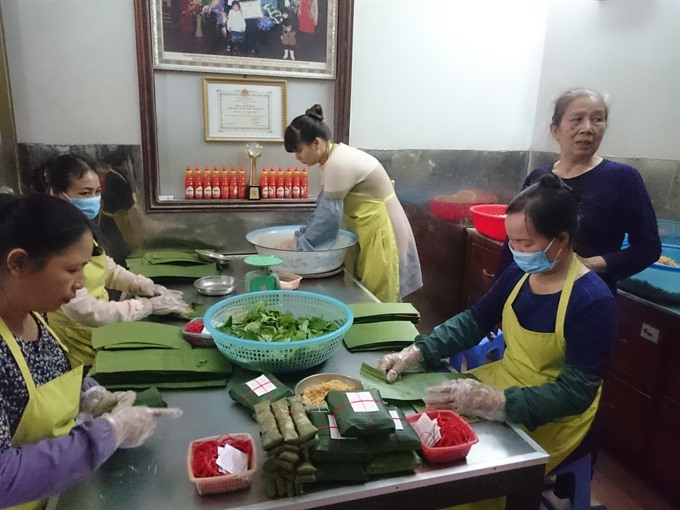 |
| In charge: Mrs. Cam (standing right) looks over the process while her daughter-in-law weighs each pack. |
Nem Phùng Thái
As we prepared to leave, a car with a Hà Nội license plate stopped in front of the shop and three women came in. “Please pack for us 16 buns! We take them to Hồ Chí Minh City as a gift.”
“It’s all labour and hard work.” Mr. Thái said. “Over the past one hundred years, our family’s nem has been with us during our country’s ups and downs. Today, my children, my grandchildren grew up learning the work. They must love the dish and love the process of making it so as to keep our family’s craft.” — VNS

